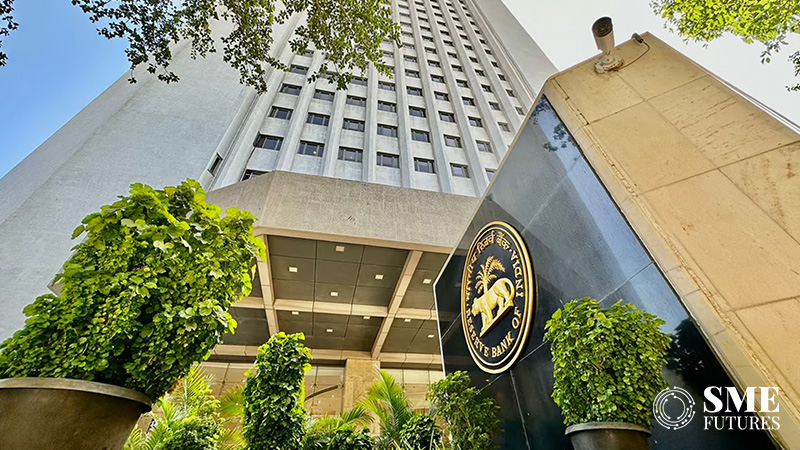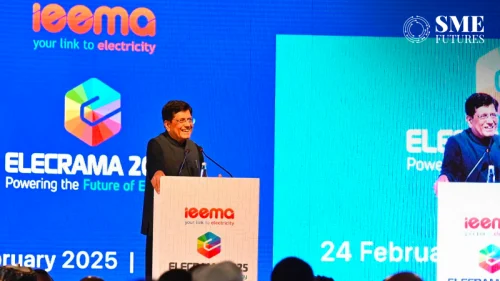In a widely anticipated move, the Reserve Bank of India (RBI) has announced its decision to maintain the repo rate at 6.5 per cent for the seventh consecutive time. The decision, revealed by RBI Governor Shaktikanta Das, comes amidst ongoing concerns over economic uncertainties, particularly regarding inflationary pressures and growth prospects.
According to the economists, the decision reflects RBI cautious stance amidst economic uncertainties. The decision was supported by five out of the six members of the Monetary Policy Committee (MPC), as revealed by RBI Governor Shaktikanta Das.
What experts are saying
Jyoti Prakash Gadia, Managing Director at Resurgent India feels the decision was expected.
“The continued ‘wait and watch’ approach has been primarily determined by the sticky food inflation besides the recent upswing in crude oil prices. The RBI has chosen to be cautious aiming at a durable decline in inflation towards the target level of 4 per cent rather than tinkering with the rates without stability of prices. The focus is also on ensuring the fuller transmission of the previous repo rate changes before taking up any fresh stance,” he said.
However an optimistic outlook is projected on the growth front at 7 per cent for the full financial year backed by positive indicators on investment and capacity utilisation which RBI has duly taken into account. This is expected to enable RBI to take appropriate steps for a reduction in the repo rate in due course, hope fully in the second half of the financial year.
“RBI has also indicated it resolves to closely monitor inflation and has not reduced the projections for the full year indicating its concern about volatility due to supply chain issues. As anticipated, RBI has assured a flexible adaptive approach on the liquidity front which is much needed at the current point of time. The emphasis on price stability and durability with better growth prospects has underlined the current pragmatic approach of RBI.” he added.
Demand to rise
Shraddha Umarji, Economist, Institutional Research at Prabhudas Lilladher said that Das reiterated the need to maintain growth-inflation dynamics. According to her, on the growth front, rural demand is expected to pick up based on a normal monsoon and consequent growth in rural income. Urban demand is expected to receive a boost from higher employment in both formal and informal sectors.
“India’s unemployment rate has been trending downwards sequentially post-Covid, touching a low of 3.2 per cent in FY23. The governor also indicated that government capex as well as private capex has shown steady progress. As global growth conditions improve, India’s external sector demand is expected to revive,” she said.
On the inflation front, CPI forecast for FY25 has been kept unchanged at 4.5 per cent. Climate shocks, both domestically and internationally, could lead to spikes in food prices in the near term. The governor also highlighted volatility in crude prices. Therefore, RBI will be watchful of upcoming growth and inflation dynamics, and a rate cut may be deferred until October 24, post-monsoons.” she added.
Impact on bonds
Madhavi Arora, Lead Economist, Emkay Global Financial Services said that the MPC policy took recognition of fluidity of global narratives, even has domestic dynamics have stayed favourable. This suggests that when needed, the aim of financial stability may even precede inflation management.
“We have long maintained that the RBI policy has been somewhat pegged to the Fed, specifically over the last two years, even as it formally targeted inflation. This seems fair, as external dynamics have been fluid, implying that the policy prerogative needs to be flexible for ensuring financial stability. The fluidity of global narratives and policy repricing, in conjunction with the near-term problem-of-plenty on INR/bonds, could make it arduous for the RBI to find a balance in its policy biases,” she said.
Arora asserts that the RBI’s tone will slowly tiptoe to ‘Gracklish’ from the usual ‘Hawk-Dove’ signalling, implying a non-committal stance and limited definite forward guidance ahead. While bull-steepening of India bonds looks to be a popular trade, consistent repricing of Fed cuts could spill over into the RBI’s reaction function and will be cyclically noisy for bonds/FX.
Impact on industries
Reacting on the announcement PHDCCI said the policy rates will propel economic activity and boost economic growth. Sanjeev Agrawal, President, PHD Chamber of Commerce and Industry (PHDCCI) states that the continuously accelerating economic growth and softening inflation trajectory, coupled with the status quo in repo rate will lead to much higher GDP growth in FY2025.
“We expect a repo rate cut as and when headline inflation softens around 4.5 per cent,” said Agrawal.
As the third quarter of FY23-24 GDP surprised with a significantly high growth of 8.4%, the current financial year is also expected to give such surprises on the back of robust economic activity and enhanced resilience of the economy, he added.
Impact on real estate
Avneesh Sood, Director Eros Group said that the unchanged repo rate demonstrates a prudent approach towards balancing economic stability and growth.
This decision, upheld for the seventh consecutive time, instills confidence within the real estate sector. With stable interest rates, homebuyers can proceed with assurance, fostering sustained development in the housing market.
“Notably, the stability in the repo rate directly impacts the lending landscape, with potential implications on home loan EMIs. For instance, with over 60 per cent of home loans in India being on floating interest rates, any alteration in the repo rate could significantly influence borrowing costs. This steady stance by the RBI aligns with the ongoing efforts to bolster economic resilience, paving the way for a conducive environment for investment and growth in the real estate sector. We anticipate this stability to further buoy consumer sentiment and facilitate robust growth in the coming quarters.” he added.
RBI decision to support energy sector
Kush Singh, CEO, Essar Power said that the RBI’s emphasis on domestic factors showcases its commitment to financial stability and the crucial role of sustenance in navigating market uncertainties.
According to him, the well measured policy stance will support the energy sector’s long-term sustainability and robustness, aligning with the industry’s vision for a cleaner and greener future.
“This decision highlights the significance of RBI’s initiatives in fostering economic growth, demonstrating a careful balance between economic expansion and inflation management.” he said.











